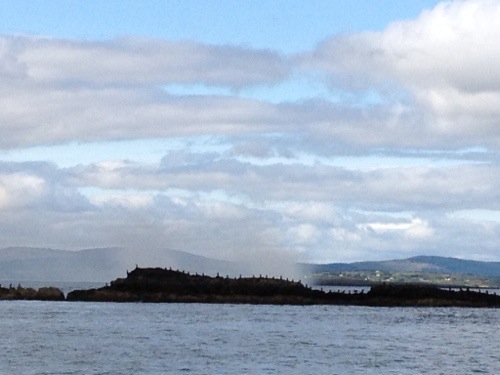On the eighth day of our journey we went to Ireland’s southern most inhabited island, Cape Clear. Cape Clear Island is around 5km long and 2.5km wide. The landscape is absolutely spectacular. Luckily the sea was not too rough during the 40-minute ferry ride from Baltimore to the Island’s North Harbour. Local flute player Fiachra Ó Tórna picked us up at the pier and brought us to the hostel. In the evening Ilse participated in an Irish music session in one of the local pubs.
In the very early morning, we went up to the highest point of the island so as to film the air at sunrise. It was quite hard to find, especially in the dark and dragging heavy equipment up the hill through high grasses! We knew at what time the sun would rise and in what direction. There were significants clouds at the horizon, but with some openings too. Maarten set up the camera more or less in the estimated direction, Ilse set up stool and cello and played through the air twice as Maarten filmed it.
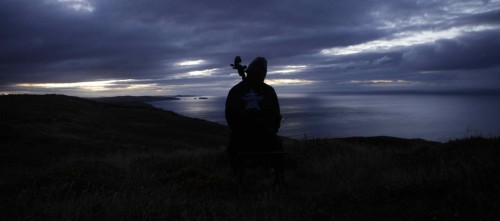
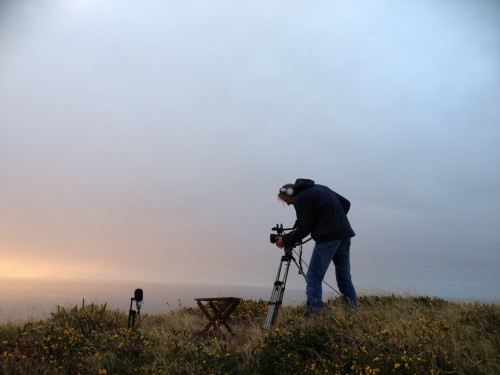
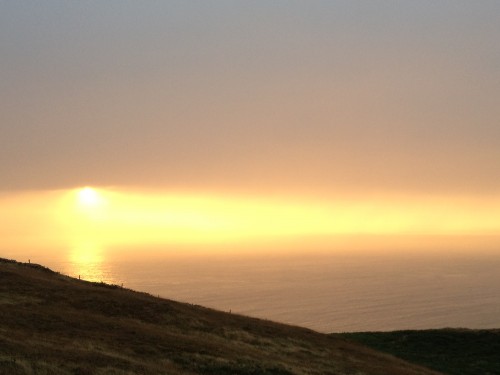
Then suddenly, the sun broke through a hole in the clouds at exactly (!) the perfect point in the view of the camera. Maarten immediately started recording and Ilse played the air with such a beautiful emotion, feeling deeply inspired by the enchanting scene. As she played, the sun rose further and its beams lit up the landscape, the sea, the cello. It was one of the most intense and magical moments of our journey. We realized immediately that this would be the opening shot of the film!
We found some very interesting information about the air. The first time Cape Clear air is published with the name Cape Clear is in the 1909 collection of Patrick Weston Joyce called Old Irish Folk Music and Songs. In 1905 in a collection by George Petrie, an almost identical tune can be found, with the title ‘the Irish setting of Black Eyed Susan’ .
Ilse searched for the original Black Eyed Susan and found it was a song in a collection from 1730, titled Sweet William’s Farewell to Black-ey’d Susan. The tune is by English composer Richard Leveridge with words by John Gay. The Cape Clear air we know today has many similarities and must have derived from this tune. It is a sailor’s love song.
In the afternoon, we went to see Chuck and Nell Kruger, an American couple who have been living on the island for quite some years. They received us warmly and offered us something to eat and drink. Chuck knows a lot about the island. He wrote several books about Cape Clear Island, one of which we had read during our research. As we had no time to extensively visit the island, he showed us a photo book of the island that he published not too long ago. He then read us three very nice poems from a bundle of Cape Clear poems that he composed. Chuck has a website with his work.
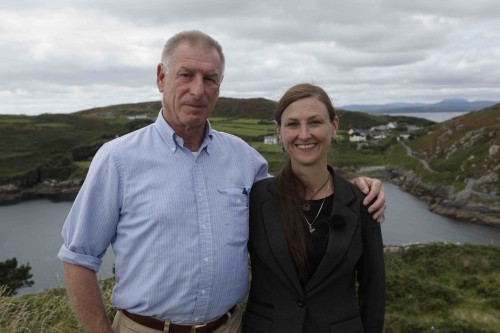
On the way back to the mainland from Cape Clear we passed bird island, called this for obvious reasons! There were two fires on the land behind and the smoke set a great backdrop for the island.
